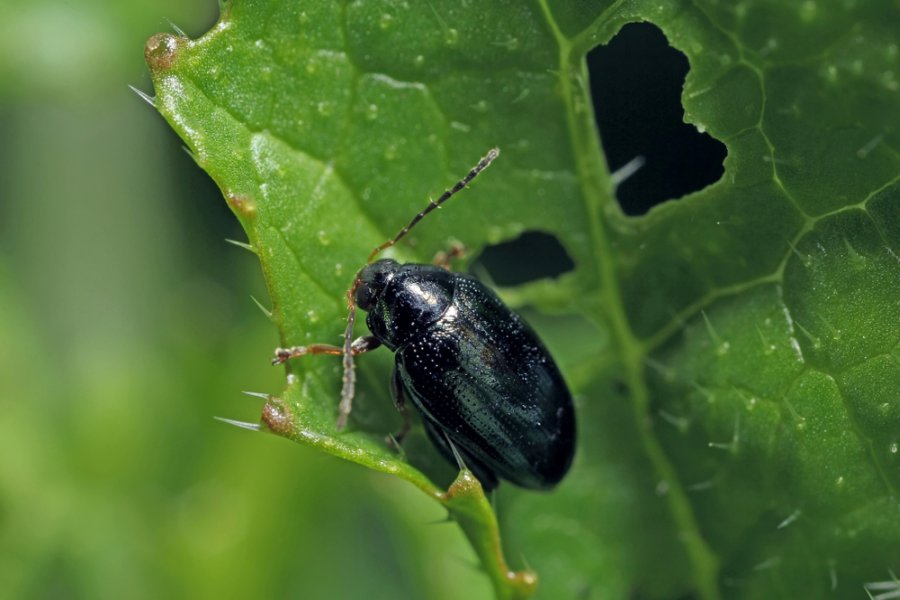
Researchers have taken the first step in developing a commercial lure to help tackle the devastating and costly damage caused by the cabbage stem flea beetle.
Following withdrawal of neonicotinoids in 2013, CSFB has emerged as the most serious economic pest of oilseed rape and resistance to pyrethroid insecticides has exacerbated this issue.
Damage is caused by both adults and their larvae, with most harm being caused by adults that migrate into crops during emergence, when the crop is most susceptible.
Approximately 331,000 hectares of oilseed rape are grown in the UK with a market value of more than £700 million.
It is estimated that annual yield losses are currently between 5 to 15 percent, which equates to over £35 million.
Furthermore, lodging, which is caused by larval feeding in the stems can be extensive with losses estimated to be between £47m and £120m annually.
Initiated by Cheshire-based International Pheromone Systems, work has begun to identify any biological active chemical components which could be used to sensitively monitor for the pest.
The components would work both before and at crop emergence so that farmers are alerted to the presence of the beetle and can take remedial action if required.
The research is being carried out by researchers at Harper Adams University while the project is being managed by Crop Health and Protection (CHAP) - one of four UK Agri-Tech Innovation Centres.UK Agri-Tech Innovation Centres.
Dr Sam Jones, technical manager for International Pheromone Systems, said: “A pheromone has yet to be formally identified and this is the logical first step in the process of developing a commercial lure for this important pest.
"This project will focus on identifying any volatiles such as a sex pheromone produced by adult beetles that elicit an attractive response in one or both sexes.
"If this is successful, future work will then shift to testing the volatile components in the field.”
Dr Tom Pope, reader in entomology at Harper Adams, said there was an urgent need to develop the tools required to effectively manage cabbage stem flea beetle.
“The identification of biologically active volatile chemicals would improve the monitoring of this pest," he said.
"[It] may also form the basis of novel controls that could be used to reduce the damage caused by this species to oilseed rape crops - and that is where we hope this research may help."
